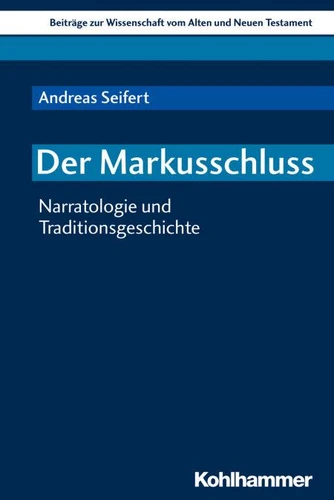Der Markusschluss. Narratologie und Traditionsgeschichte
Par : , , , ,Formats :
Disponible dans votre compte client Decitre ou Furet du Nord dès validation de votre commande. Le format PDF est :
- Compatible avec une lecture sur My Vivlio (smartphone, tablette, ordinateur)
- Compatible avec une lecture sur liseuses Vivlio
- Pour les liseuses autres que Vivlio, vous devez utiliser le logiciel Adobe Digital Edition. Non compatible avec la lecture sur les liseuses Kindle, Remarkable et Sony
 , qui est-ce ?
, qui est-ce ?Notre partenaire de plateforme de lecture numérique où vous retrouverez l'ensemble de vos ebooks gratuitement
Pour en savoir plus sur nos ebooks, consultez notre aide en ligne ici
- Nombre de pages314
- FormatPDF
- ISBN978-3-17-036435-6
- EAN9783170364356
- Date de parution13/03/2019
- Protection num.Digital Watermarking
- Taille3 Mo
- Infos supplémentairespdf
- ÉditeurKohlhammer
Résumé
The original conclusion of the Gospel of Mark has always been a subject of debate and already led early groups of recipients of the text to devise alternative endings. The present study carries out a methodologically guided narratological analysis of the end of the Gospel of Mark that leads to tradition-historical comparison with narrative texts from the literary milieu of the second Gospel. On this basis, it defines the functioning of Mk 16.1&8 within the context of the overall narrative.
An analytical model is then developed through an engagement with approaches from classical philology and literary studies, with the help of which it becomes possible to systematize the narrative conclusions of early Christian texts.
An analytical model is then developed through an engagement with approaches from classical philology and literary studies, with the help of which it becomes possible to systematize the narrative conclusions of early Christian texts.
The original conclusion of the Gospel of Mark has always been a subject of debate and already led early groups of recipients of the text to devise alternative endings. The present study carries out a methodologically guided narratological analysis of the end of the Gospel of Mark that leads to tradition-historical comparison with narrative texts from the literary milieu of the second Gospel. On this basis, it defines the functioning of Mk 16.1&8 within the context of the overall narrative.
An analytical model is then developed through an engagement with approaches from classical philology and literary studies, with the help of which it becomes possible to systematize the narrative conclusions of early Christian texts.
An analytical model is then developed through an engagement with approaches from classical philology and literary studies, with the help of which it becomes possible to systematize the narrative conclusions of early Christian texts.



